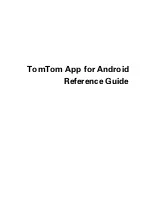
30
Chapter 1: Introduction to ColdFusion MX
About ColdFusion MX
ColdFusion MX is a rapid scripting environment server for creating Rich Internet Applications.
ColdFusion Markup Language (CFML) is an easy-to-learn tag-based scripting language, with
connectivity to enterprise data and powerful built-in search and charting capabilities. ColdFusion
MX enables developers to easily build and deploy dynamic websites, content publishing systems,
self-service applications, commerce sites, and more.
ColdFusion MX consists of the following core components:
•
ColdFusion scripting environment
•
CFML
•
ColdFusion application services
•
ColdFusion MX Administrator
The following sections describe these core components in more detail.
The ColdFusion scripting environment
The ColdFusion scripting environment provides an efficient development model for Internet
applications. At the heart of the ColdFusion scripting environment is the ColdFusion Markup
Language (CFML), a tag-based programming language that encapsulates many of the low-level
details of web programming in high-level tags and functions.
ColdFusion Markup Language
ColdFusion Markup Language
(
CFML) is a tag-based language, similar to HTML, that uses
special tags and functions. With CFML, you can enhance standard HTML files with database
commands, conditional operators, high-level formatting functions, and other elements to rapidly
produce easy-to-maintain web applications. However, CFML is not limited to enhancing
HTML. For example, you can create Macromedia Flash MX applications that consist entirely of
Flash elements and CFML. Similarly, you can use CFML to create web services for use by other
applications.
The following sections briefly describe basic CFML elements. For more information, see
Chapter
2, “Elements of CFML,” on page 39
.
CFML tags
CFML looks similar to HTML—it includes starting and, in most cases, ending tags, and each tag
is enclosed in angle brackets. All ending tags are preceded with a forward slash (/) and all tag
names are preceded with
cf
; for example:
<cftagname>
tag body text and CFML
</cftagname>
CFML increases productivity by providing a layer of abstraction that hides many low-level details
involved with Internet application programming. At the same time, CFML is extremely powerful
and flexible. ColdFusion lets you easily build applications that integrate files, databases, legacy
systems, mail servers, FTP servers, objects, and components.
Summary of Contents for COLDFUSION MX 61-DEVELOPING COLDFUSION MX
Page 1: ...Developing ColdFusion MX Applications...
Page 22: ...22 Contents...
Page 38: ......
Page 52: ...52 Chapter 2 Elements of CFML...
Page 162: ......
Page 218: ...218 Chapter 10 Writing and Calling User Defined Functions...
Page 250: ...250 Chapter 11 Building and Using ColdFusion Components...
Page 264: ...264 Chapter 12 Building Custom CFXAPI Tags...
Page 266: ......
Page 314: ...314 Chapter 14 Handling Errors...
Page 344: ...344 Chapter 15 Using Persistent Data and Locking...
Page 349: ...About user security 349...
Page 357: ...Security scenarios 357...
Page 370: ...370 Chapter 16 Securing Applications...
Page 388: ...388 Chapter 17 Developing Globalized Applications...
Page 408: ...408 Chapter 18 Debugging and Troubleshooting Applications...
Page 410: ......
Page 426: ...426 Chapter 19 Introduction to Databases and SQL...
Page 476: ...476 Chapter 22 Using Query of Queries...
Page 534: ...534 Chapter 24 Building a Search Interface...
Page 556: ...556 Chapter 25 Using Verity Search Expressions...
Page 558: ......
Page 582: ...582 Chapter 26 Retrieving and Formatting Data...
Page 668: ......
Page 734: ...734 Chapter 32 Using Web Services...
Page 760: ...760 Chapter 33 Integrating J2EE and Java Elements in CFML Applications...
Page 786: ...786 Chapter 34 Integrating COM and CORBA Objects in CFML Applications...
Page 788: ......
















































